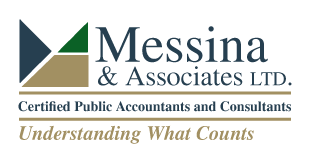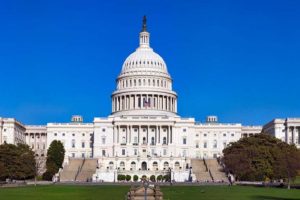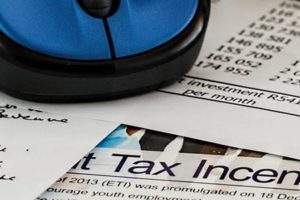The following information is based on a communication from the AICPA.
The U.S. Small Business Administration (SBA), in consultation with Treasury, released a revised loan forgiveness application for the Paycheck Protection Program (PPP) on Wednesday. June 17. The SBA also unveiled a new EZ application for forgiveness of PPP loans.
The applications reflect changes to the PPP made by the recently passed Paycheck Protection Flexibility Act of 2020. These applications and instructions are available in the links below:
- Revised PPP Loan Forgiveness Application and instructions
- EZ PPP Loan Forgiveness Application and instructions
The releases Wednesday came only hours after the SBA issued a new interim final rule providing guidance on how to calculate employee and owner compensation for loan forgiveness in the new 24-week covered period created by the Paycheck Protection Flexibility Act.
You can learn more about the bill by reading our recent post on PPP Reform.
Application highlights
The revised PPP Loan Forgiveness Application and instructions include a number of notable items. Among them are:
- Health insurance costs for S corporation owners cannot be included when calculating payroll costs; however, retirement costs for S corporation owners are eligible costs.
- Safe harbors for excluding salary and hourly wage reductions and reductions in the number of employees (full-time equivalents) from loan forgiveness reductions can be applied as of the date the loan forgiveness application is submitted. Borrowers don’t have to wait until Dec. 31 to apply for forgiveness to use the safe harbors.
- Borrowers that received loans before June 5 can choose between using the original eight-week covered period or the new 24-week covered period.
New EZ application details
The EZ PPP Loan Forgiveness Application requires fewer calculations and less documentation than the full application. The EZ application can be used by borrowers that:
- Are self-employed and have no employees;
- Did not reduce the salaries or wages of their employees by more than 25% and did not reduce the number or hours of their employees; or
- Experienced reductions in business activity as a result of health directives related to COVID-19 and did not reduce the salaries or wages of their employees by more than 25%.
New interim final rule published
The Paycheck Protection Flexibility Act tripled the duration during which PPP recipients could spend the funds and still qualify for loan forgiveness — a span of time called the covered period. The interim final rule adjusts and adds to previous guidance for calculating loan forgiveness under the original eight-week covered period.
The PPP allows loan forgiveness for payroll costs — including salary, wages, and tips — for up to $100,000 annualized per employee, or $15,385 per individual over the eight-week period. The new interim final rule establishes the 24-week maximum for full loan forgiveness at $46,154 per individual.
Owner compensation replacement calculations
While the employee compensation limit for the 24-week period is three times the eight-week limit, the interim final rule does not do the same with the owner compensation replacement for businesses that file Schedule C, Profit or Loss From Business, or Schedule F, Profit or Loss From Farming, tax returns. For those businesses, forgiveness for the owner compensation replacement is calculated for the eight-week period as 8 ÷ 52 × 2019 net profit, up to a maximum of $15,385. For the 24-week period, the forgiveness calculation is limited to 2.5 months’ worth (2.5 ÷ 12) of 2019 net profit, up to $20,833.
The owner compensation replacement calculations are structured to prevent owners from reaping PPP windfalls that Congress did not intend, according to the interim final rule. Specifically, the SBA and Treasury, which oversee the PPP, want to prevent the following scenario, which is made possible by a provision in the Paycheck Protection Flexibility Act that provides a safe harbor from loan forgiveness reductions to any borrower that is unable to return to the same level of business activity it was operating at before Feb. 15, 2020.
Because the maximum loan amount for a business is generally based on 2.5 months of the borrower’s average total monthly payroll costs during the one-year period preceding the loan, a borrower with one other employee would receive a maximum loan amount equal to five months of payroll (2.5 months of payroll for the owner plus 2.5 months of payroll for the employee). If the owner laid off the employee and availed itself of the aforementioned safe harbor, the owner could treat the entire amount of the PPP loan as payroll, with the entire loan forgiven.
“This would not only result in a windfall for the owner, by providing the owner with five months of payroll instead of 2.5 months, but also defeat the purpose of the CARES Act of protecting the paycheck of the employee,” the interim final rule says. “For borrowers with no employees, this limitation will have no effect, because the maximum loan amount for such borrowers already includes only 2.5 months of their payroll.”
Other provisions
The interim final rule also modifies earlier guidance to account for changes included in the Payroll Protection Flexibility Act.
- The minimum term for PPP loans is raised to five years for all loans made on or after June 5. For loans made before June 5, the two-year minimum maturity remains in effect unless both the borrower and the lender agree to extend it to five years.
- The proportion of PPP funding that must be used on payroll costs to qualify for full forgiveness drops to 60% from 75%.
- The application deadline for PPP loans remains June 30.
As always, please contact us at Messina & Associates if there is anything we can do to help you navigate this new legislation from an accounting or tax perspective.




